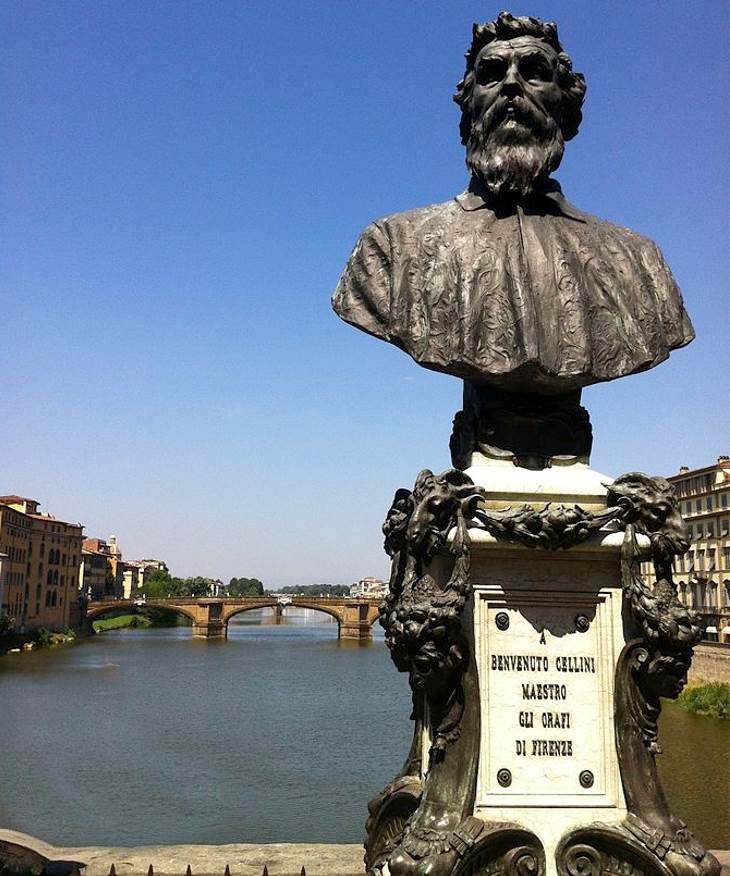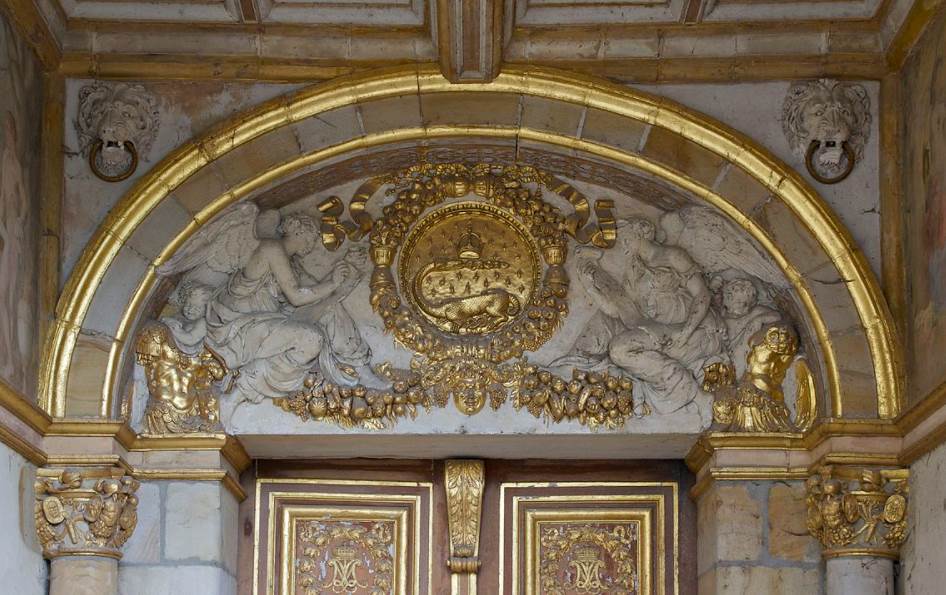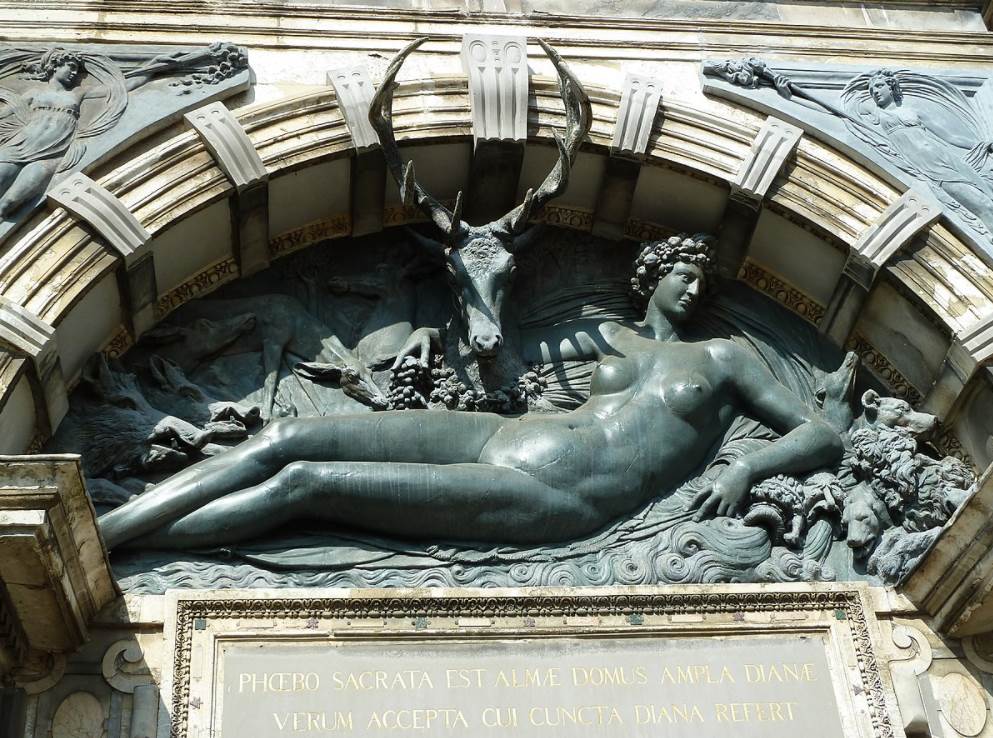Many things can be said about Benevenuto Cellini (1500-1571), an Italian artist who lived in the 16th century. According to his autobiography, he was involved in multiple violent events that forced him to flee multiple times.
When he managed to escape prison in Rome he was hired by King Francis I of France. The Mannerist artist worked at the French court for multiple years before getting into trouble once again.
Let’s take a closer look at some of the most interesting facts about the Nymph of Fontainebleau, one of Cellini’s masterpieces that has some interesting stories to tell.
1. It was produced during Cellini’s stay in France in the early 1540s
Benvenuto Cellini can be described as one of the most controversial figures in the history of art. His immense talent was often overshadowed by acts of violence which he openly talked about in his autobiography.
He was born in Florence but often spent time in other cities in Itay, including Rome. Several acts of violence later and being granted a pardon by his powerful friends, he found himself in prison in Rome, awaiting execution in the late 1530s.
He was released with the help of Cardinal d’Este of Ferrara and traveled to France to work for King Francis I. It’s during this period in the early 1540s that he worked on the Nymph of Fontainebleau, a large bronze relief that he completed in 1543.

2. It depicts a reclining nude accompanied by several animals
The relief depicts a nude reclining female nymph, a minor nature deity in Greek Mythology. She is accompanied by a large number of animals, including a stag, wild boars, dogs, and several others.
The nymph is holding her arm around the stag which makes up the upper part of the composition.
3. It’s a remarkable work in Cellini’s oeuvre for a particular reason
The first thing you notice is that the body of the nymph is not proportionate. Her head is too small compared to both the length and size of her body.
The relief was created in the early 1540s, a time that Cellini had never attempted to produce a work of this scale yet. He produced his most famous work, a delicate little sculpture called the Cellini Salt Cellar, around the same time.
It was not until after he returned to Florence after getting into trouble in France that he completed his most famous large sculpture called “Perseus with the Head of Medusa.”
The Nymph of Fontainebleau was completed between 1545 and 1554 and still decorates the Loggia dei Lanzi in the Piazza della Signoria of Florence today.
In other words, we can cut the artist some slack because this was the first large-scale bronze casting that he produced in his life.

4. It was named after the location it was supposed to be installed
The Nymph of Fontainebleau was named after the “Château de Fontainebleau,” an immense medieval castle that was transformed into a magnificent palace. This structure is located in a town with the same name at a distance of about 55.5 kilometers (34.5 miles) southeast of Paris.
The building was owned by the French kings and served as one of their official residences for multiple centuries. It was Cellini’s patron, King Francis I, who transformed the medieval castle into a fascinating Renaissance Building around the time that the artist worked here.
Cellini was commissioned to create the relief as it was supposed to decorate the tympanum, a semi-circular wall, above the palace’s entrance gate. This gate was called the “Porte Dorée” or “Golden Gate.”
It was never installed here and a gilded relief featuring a salamander, the personal symbol of King Francis I, was installed there instead.

5. It was installed at another location in France during the 1550s
The nymph represents the main figure of a legend related to the foundation of Fontainebleau. It was believed that a hunting dog found both a spring and a goddess inside the forest of Fontainebleau.
Instead of being installed above the golden gate of the Château de Fontainebleau, it was used by the architect of the Château d’Anet, a man named Philibert de l’Orme. This castle was built between 1547 and 1552 for Diane de Poitiers (1500-1566), King Henry II’s royal mistress.
Cellini’s relief was placed above the entrance gate of this château just northwest of Paris and is therefore also sometimes referred to as the “Nymph of Anet.”
Because this structure was commissioned by Diane de Poitiers, the nymph was subsequently associated with Diana, the Roman goddess of the hunt. The stag was associated with her lover, King Henri II of France.

6. It once decorated a balcony of a particular room at the Louvre
The relief that decorates the entrance gate of the Château d’Anet today is a replica of the original bronze cast produced by Benvenuto Cellini. It was moved at the start of the French Revolution to the “Musée national des Monuments Français.”
This is a plaster cast museum located in the Palais de Chaillot right across from the Eiffel Tower. It was moved once again to the Louvre Museum in 1797 where it was installed on the Caryatides Balcony.
This balcony is located in the “Salle des Caryatides,” a reference to the sculpted female figures that serve as supportive columns, in the Lescot Wing of the museum.

7. How big is the Nymph of Fontainebleau?
Moving around this massive bronze relief wasn’t an easy thing to do. That’s because of the sheer size of this monumental work of art which has dimensions of 205 x 409 centimeters (80.7 x 161.02 inches).
8. Where is the sculpture located today?
The Salle des Caryatides, and more specifically, the Caryatides Balcony, wasn’t the final location of the sculpture yet. It was moved once again from this location and replaced with a plaster cast in the year 1847.
Today, the Nymph of Fontainebleau is decorating the Mollien Staircase at the Louvre Museum.
This monumental staircase is located in the Denon Wing of the Louvre, without a doubt the most popular wing inside the museum as it’s home to the Louvre’s most famous painting, the Mona Lisa.



